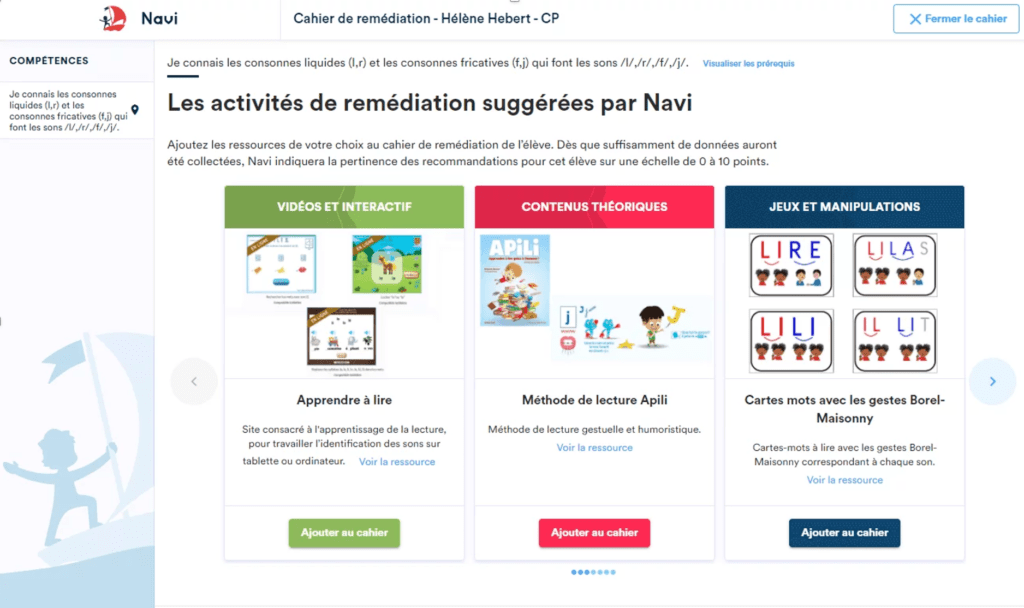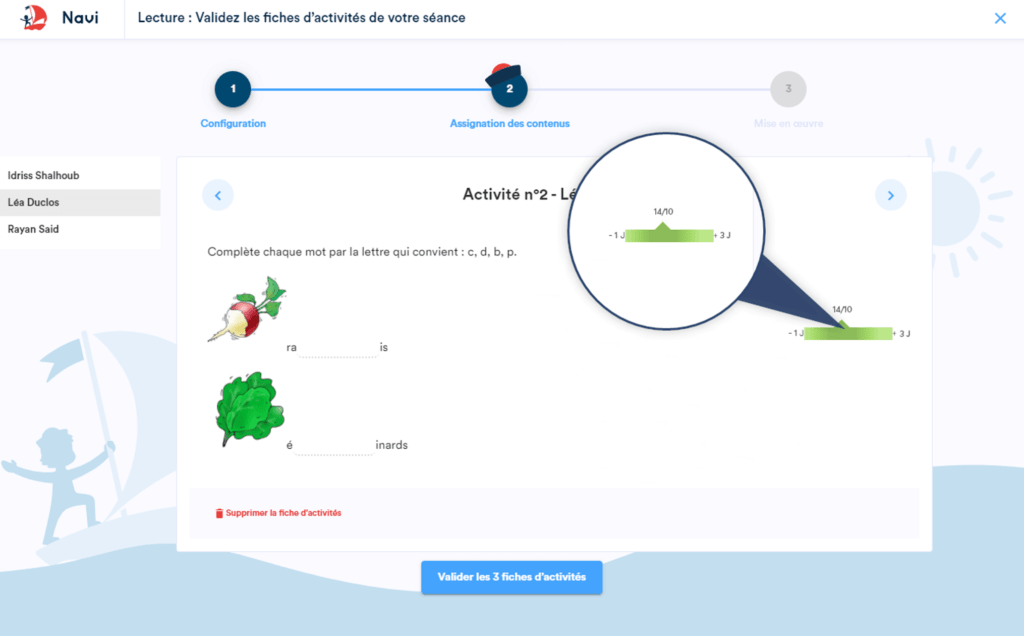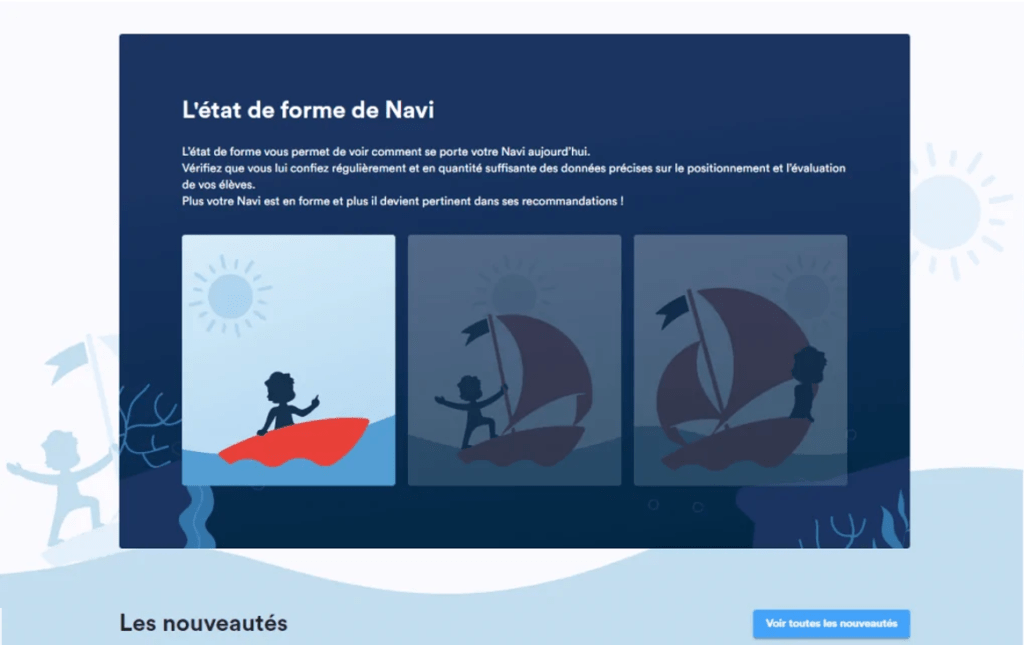Navi, the smart assistant for teachers
A new collaboration is born, the one of Beneylu and Domoscio, with the aim of creating Navi, the smart assistant for teachers. In this article we will show the benefits from this tool for the teachers and how to involve them in the project.
1 – What is Navi project?
Navi is a teacher’s assistant in the form of a learning platform for French skills of cycle 2 students (CP, CE1 and CE2). This platform relies on the massive and secure use of data and artificial intelligence to produce personalized and adaptive learning paths, on paper and electronic support.
Navi project takes into account the context of the classroom and the interest of limiting screen time for students, preserving the gesture of writing on paper and assisting the teacher. The platform offers both printable and multimedia resources, dashboards showing the skills of students and groups of students, and a system of recommendations to adapt to the level of each student.
Navi, in his role as an assistant, helps the teacher after the transmission and evaluation of knowledge in the remediation (in case of blocking or dropping out of some students) and the memorization of all to build a solid and lasting foundation. Its missions are
- To assist the teacher in remediation: recommendations of pedagogical content adapted to the difficulty encountered and recommendations of differentiated exercises;
- To assist the teacher in revision: reminders of key notions already acquired;
- To assisting the teacher in his or her evaluations: scorecards and assessments.
2 – Domoscio’s artificial intelligence at the service of education
Navi uses Domoscio’s own artificial intelligence components, including:
Remediation: Remediation is particularly useful for skill that has not been mastered, which often results in the student being blocked. Remediation then allows the teacher to spend more time with the child and less time searching for educational resources. Artificial intelligence offers teachers remediation activities adapted to the learning profile of each students.
Artificial intelligence thus personalizes the learning experience of students through differentiated learning paths. To do so, the system produces individualized recommendations that aim to guide the teacher in finding appropriate resources (pedagogical activities, exercises or lessons) for better achievement of the students’ skills development objectives.

Memorization: thanks to the positionings and evaluations entered by teachers in Navi, artificial intelligence can support students in their long-term memorization of the concepts they have learned. From the tool, teachers are then able to identify when the memorization activity will be the most effective. The process is: once the student has acquired a skill( meaning that the teacher or the success of an exercise has allowed Navi to decide that the skill is validated), the system will activate the memory footprint, corresponding to calculating an optimal revision schedule on the acquired skill. This process is based on the analysis of the student’s responses in order to refine the estimated memorization capacity and to propose revision dates that are increasingly adapted to the student’s profile.

TDashboards and assessments: by analyzing all the learning traces produced by the students, artificial intelligence coupled with ergonomic visualizations enable the teacher to provide the right level of information and indicators in order to steer the progress of the group and of each student. A system also makes it possible to provide the end-user with comprehensible feedback on decision-making in order to clarify the use and understanding of the functioning of the AI and thus avoid the “black box” effect.

3 – The deployment of Navi in France
During the 2020-2021 school year, the pilot phase of Navi made it possible to validate the hypotheses of use by cycle 2 teachers for positioning, remediation and memorization.
This year’s pilot phase saw 50,000 memorization activities with students in cycle 2 in 9 academies, to validate the design hypotheses and improve the general functioning of Navi in contact with teachers.
This is supported by tailor-made assistance for national education teams, online training for teachers and various field events on the themes of memorization and artificial intelligence applied to teaching.
4 – The future of Navi in the classroom
The Ministry of Education recognizes that Navi has reached its industrialization objectives and that the platform is ready to be deployed on a large scale in all voluntary cycle 2 classes.
Navi’s “position – remediate – evaluate” operating principle is completely independent of the subject studied and the class level. This could allow for the expansion of levels (cycles 2, 3 and 4) and teaching areas such as mathematics or languages.
Latest news
Our latest articles about the topics: learning, science and Domoscio's news.